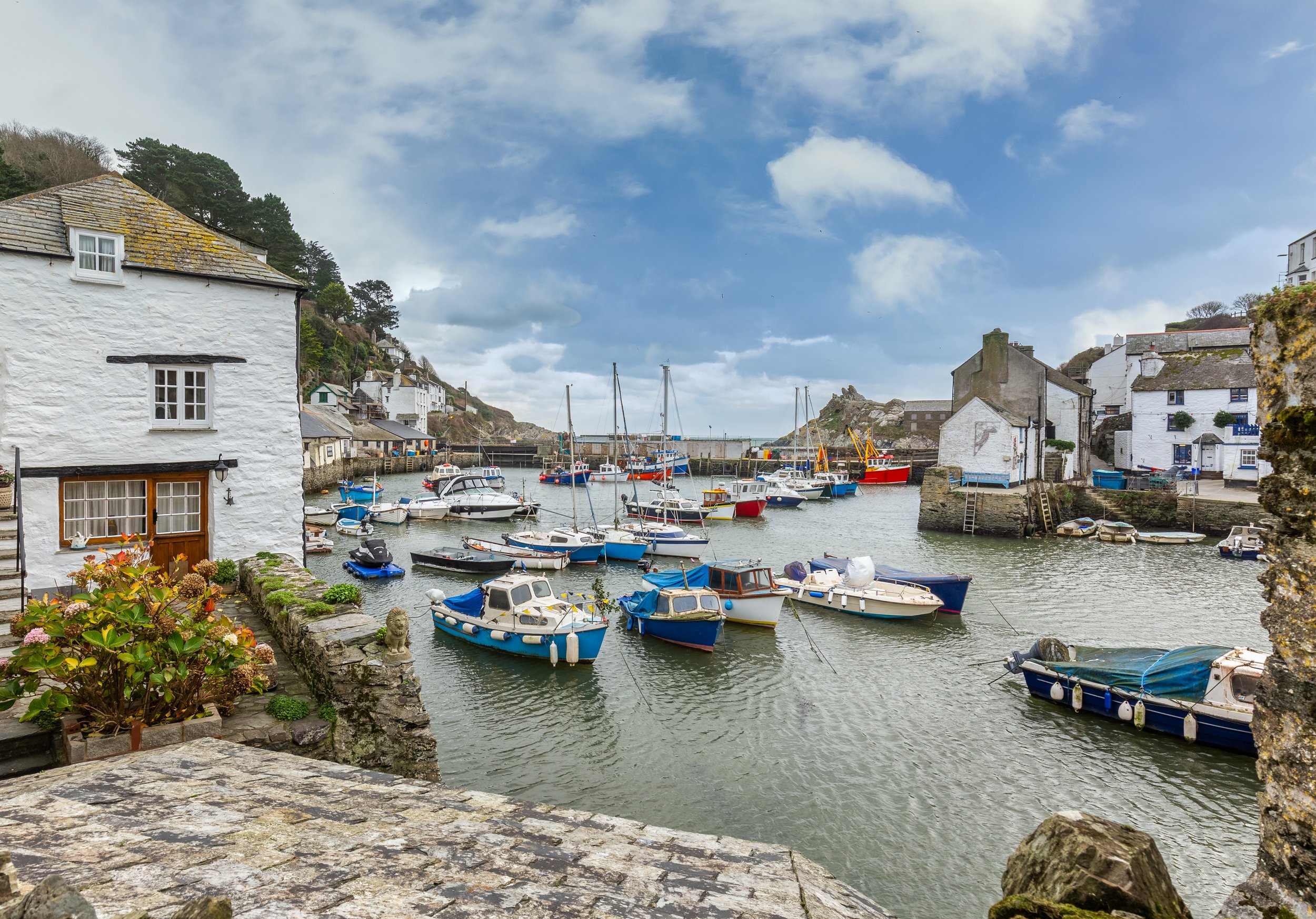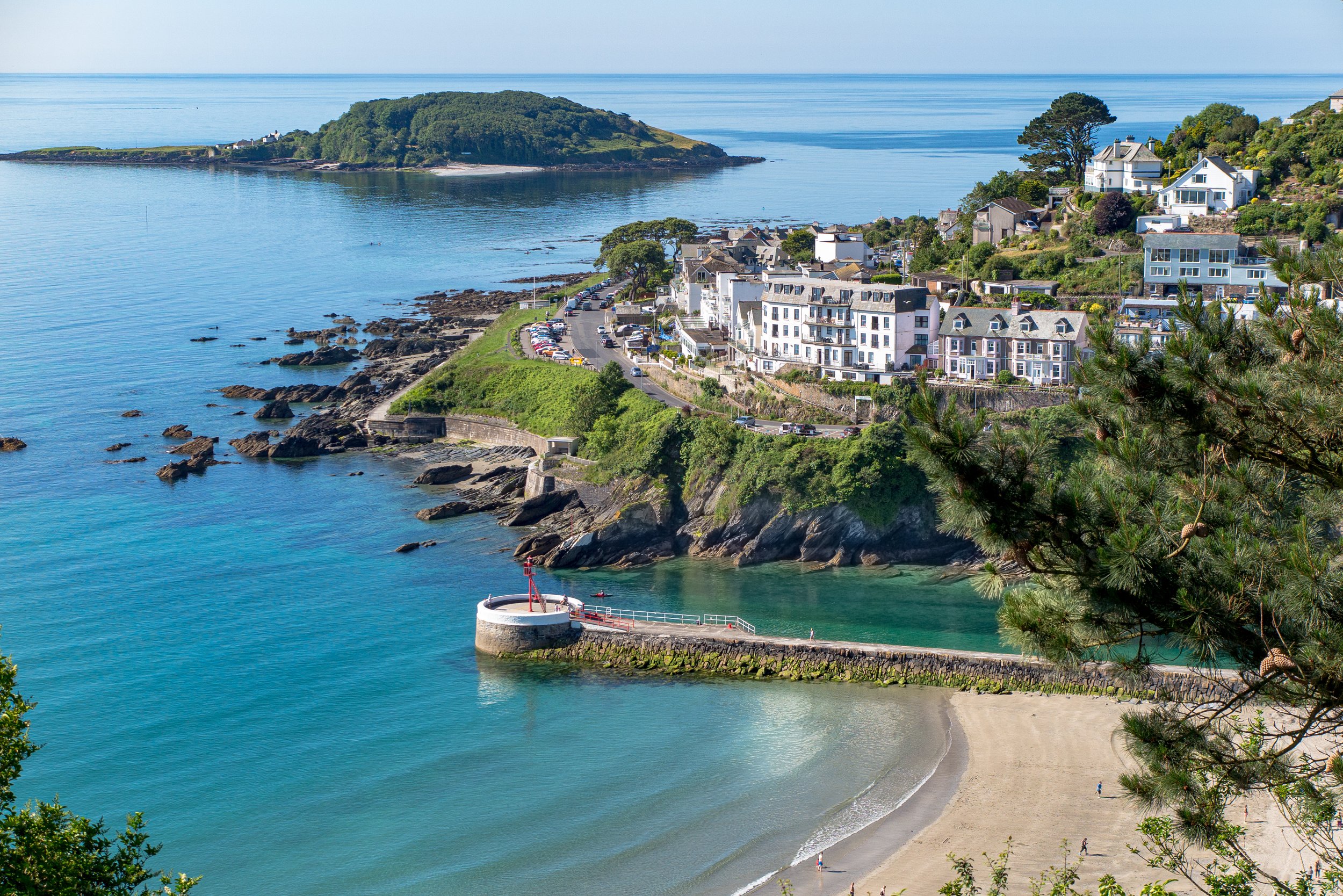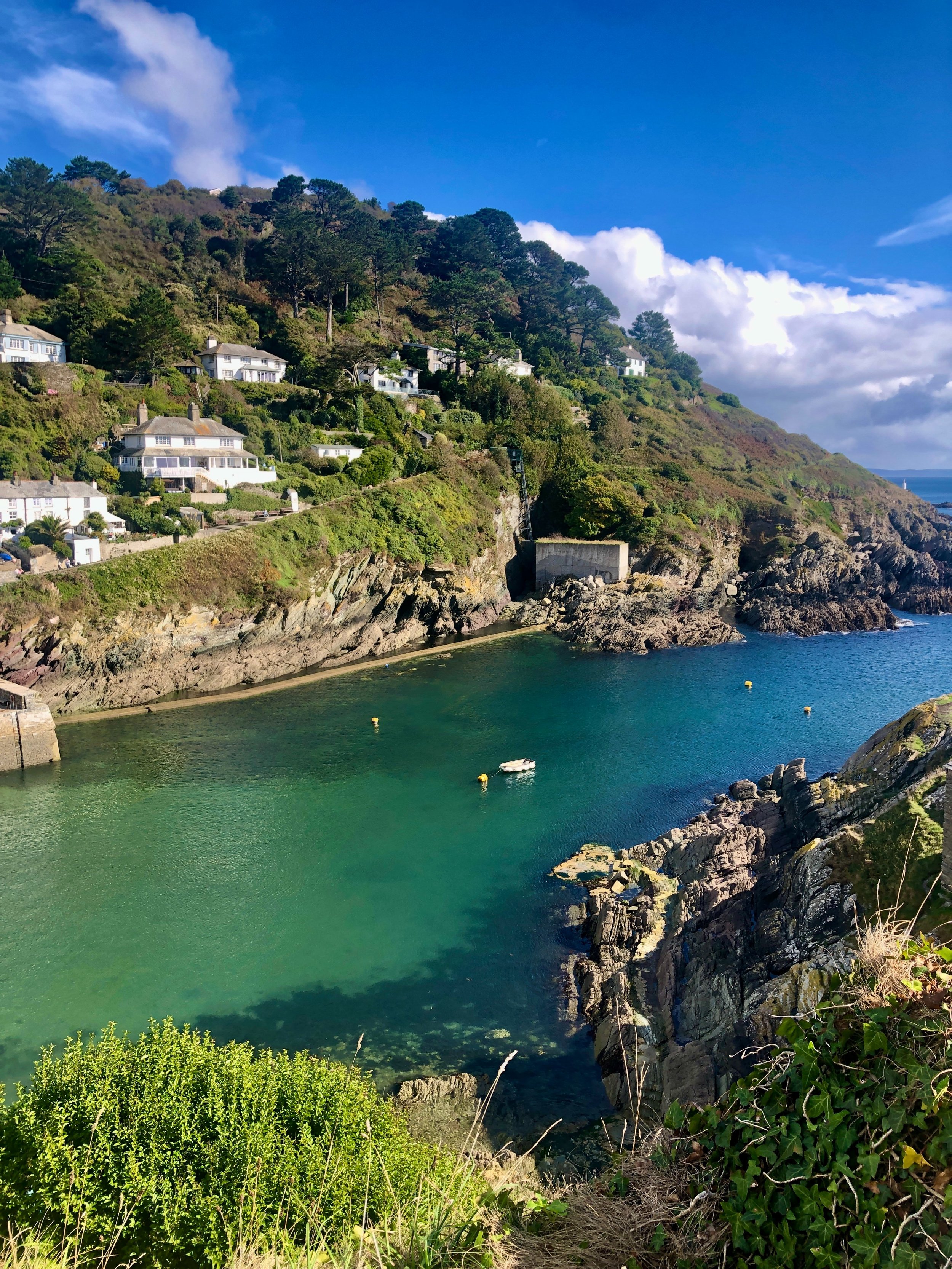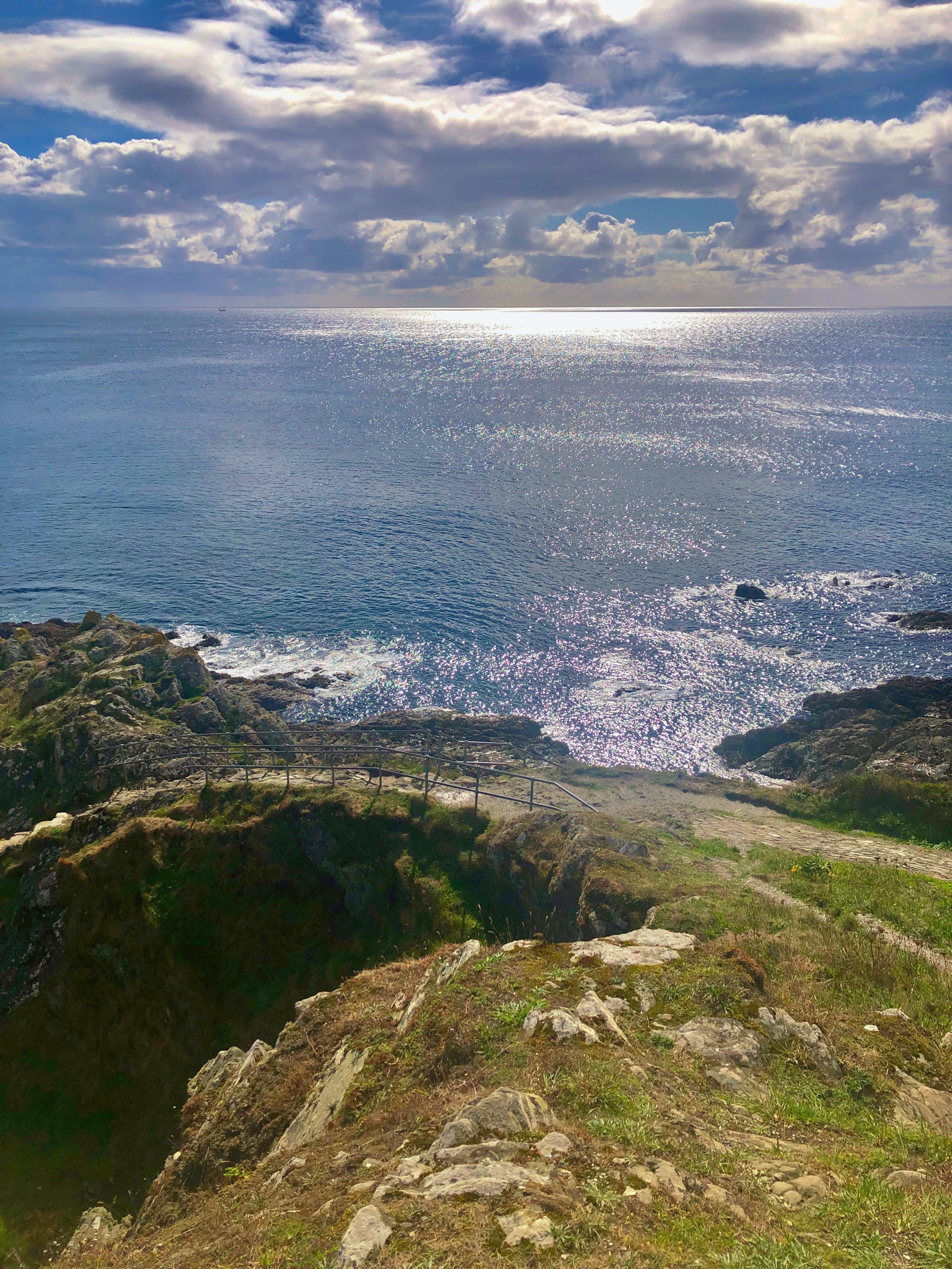
Polperro
Polperro is thought by many to be Cornwall’s most picturesque fishing village. It certainly is by us!

A quintessential Cornish
fishing village
With its harbour hidden in the folds of the cliffs between Fowey and Looe. It recently reached the semi-final of Channel 4’s Village of the Year and is probably one of the most photographed villages in the world! There is much to explore in Polperro, with its maze of streets, ancient fisherman’s cottages and fish market. Many of the houses crowding round the harbour would have been fish cellars or net lofts in the past.
On your doorstep…
There’s so much going on in Polperro – you can take a boat trip from the harbour (dogs are welcome); buy a crabbing line and attempt to catch a crab or two; explore the rock pools at low tide; fish off the rocks or organise a fishing trip.
We are right on the South West Coastal Path, so there are walks east and west as far as you like. If shopping is your thing, then we have many gift shops and art galleries – spending money here won’t be a problem! We also have art classes available in the village in a few places – the light here is almost as good as St Ives – so we have many artists offering to share their skills.
We have a natural swimming pool (an enormous rock pool) which you can swim in at low tide and sunbathe on the flat rocks surrounding. Our small sandy beach is accessible at low tide and a few hours either side and is very safe for young children. We are right on the South West Coastal Path, so there are walks east and west as far as you like. We also have a lovely model village to roam around – fantastic miniature houses.

Eating & Drinking
Polperro is a bit of a foody heaven – we have over 20 places to eat and drink – there’s something to suit all budgets from a cone of chips to a seven course extravaganza – oh, and you must have a Cornish Cream Tea! On weekends some of our six pubs become a hive of live music, which will get your feet tapping after a filling meal. If you need any recommendations we are happy to tell you where we eat.
And within easy reach…
The Eden Project
Possibly the 8th wonder of the world this construction of the worlds largest greenhouses is a collection of amazing tropical plants and it is still growing. The Eden project is a giant global garden and it is situated in an old china clay pit the size of 35 football pitches in order to accommodate the 47-metre high tropic domes. Because of the 50-metre depth of the crater practically hiding the domes and gardens you don’t see the wonder until you reach the visitor centre on the very lip of the crater.
The Lost Gardens of Heligan
Close to Mevagissey. Approx. 20 miles via Bodinnck ferry. The award winning Lost Gardens of Heligan, asleep for more than seventy years, are now the scene of the largest garden restoration project in Europe. In the spring of 1991 the gardens lay beneath a blanket of bramble, ivy, rampant laurel and fallen timber. Just one year later the restoration team opened the gardens to enable the public to share in the excitement of their discovery. Heligan is now established as a world famous “Living Museum of 19th century horticulture, and truly a great full day out.
Cotehele House
House and gardens, owned and run by The National Trust – near Callington. At the heart of this riverside estate, the house at Cotehele was mainly built 1485-1627 and was a home of the Edgcumbe family for centuries. Its granite and slatestone walls contain intimate chambers adorned with tapestries, original furniture and armour. Outside, the formal gardens overlook the richly planted valley garden below, with medieval dovecote, stewpond, Victorian summerhouse and an 18th century tower. Cotehele Mill has been restored to working condition and at the Quay there are interesting old buildings housing an art and craft gallery and an outstation of the National Maritime Museum. The restored Tamar sailing barge Shamrock is moored alongside.
Antony House
Near Torpoint approx. 20 miles. One of Cornwall’s finest early 18th-century houses, faced in lustrous silvery-grey Pentewan stone, offset by colonnaded wings of red brick and set within grounds landscaped by Repton overlooking the Lynher river. These include the formal garden with the National Collection of Day Lilies and fine summer borders, and the superb woodland garden with its outstanding displays of rhododendrons, azaleas, camellias and magnolias. Also of note are the 18th-century dovecote and the 1789 Bath Pond House. Antony has been the home of the great Cornish family of Carew for almost 600 years.
Lanhydrock House
House and gardens, owned and run by The National Trust – near Bodmin. The finest house in Cornwall, superbly set in 450 acres of wooded parkland and encircled by a garden of rare shrubs and trees, lovely all seasons, especially magnificent in Spring. Make sure you have enough time to view all 49 rooms. First built in the 17th century and largely rebuilt after a fire in 1881, the principal rooms all have beautifully worked plaster ceilings, including that of the Long gallery magnificently illustrating Old Testament scenes. Through the crenellated gatehouse (1661) an idyllic walk down to the river Fowey at Respryn Bridge and back should not be missed.

Looe - a wonderful walk away
The walk from Polperro to Looe via coastal footpath is the highlight of many peoples visit to Polperro, wonderful views. (Allow 2.5 to 3 hours each way) Be warned, you could get hooked on walking cliff paths! 5 miles by coastal path or road. A bustling fishing harbour and seaside town, it can be very busy in summer. A seven-arched bridge joins the towns of East Looe and West Looe.
East Looe has more facilities and a sandy beach (no dogs on this one), but West Looe does have two pubs and some general shops. The scenic Looe Valley Railway Line runs to Liskeard and is undoubtedly one of the prettiest in the country. As well as being popular with enthusiasts (this single track has a very steep gradient, and the conductor has to get out midway to change the points to enable the train to go “backwards” – all great fun!), it links Looe to the main Penzance – Plymouth line, and onwards to London the Midlands and the North.










